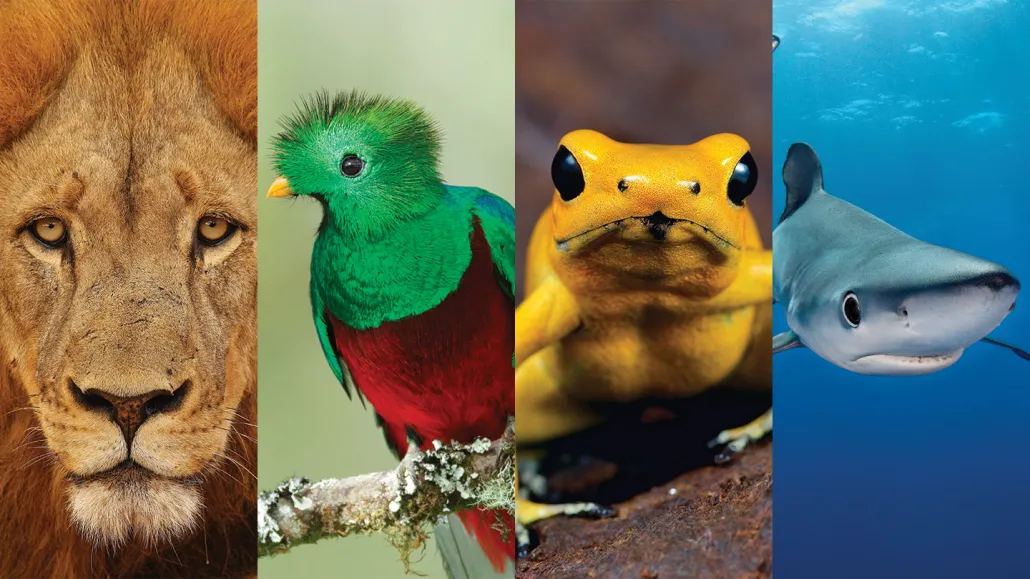Humans exploit about one-third of wild vertebrate species
Using these animals for food, medicine, trophies and the pet trade is helping push some toward extinction

Humans exploit nearly one-third of the world’s nearly 47,000 species of vertebrates — including the African lion, resplendent quetzal, golden poison frog and blue shark (left to right).
Left to right: Cameron Spencer/Getty Images; Juan Carlos Vindas/Moment/Getty Images; kikkerdirk/istock/getty images plus; James R.D. Scott/Moment/Getty Images







